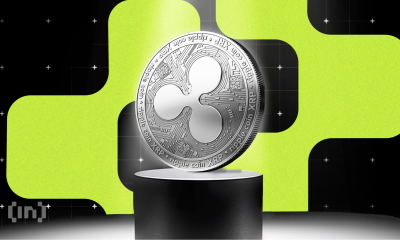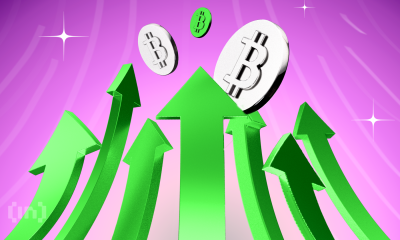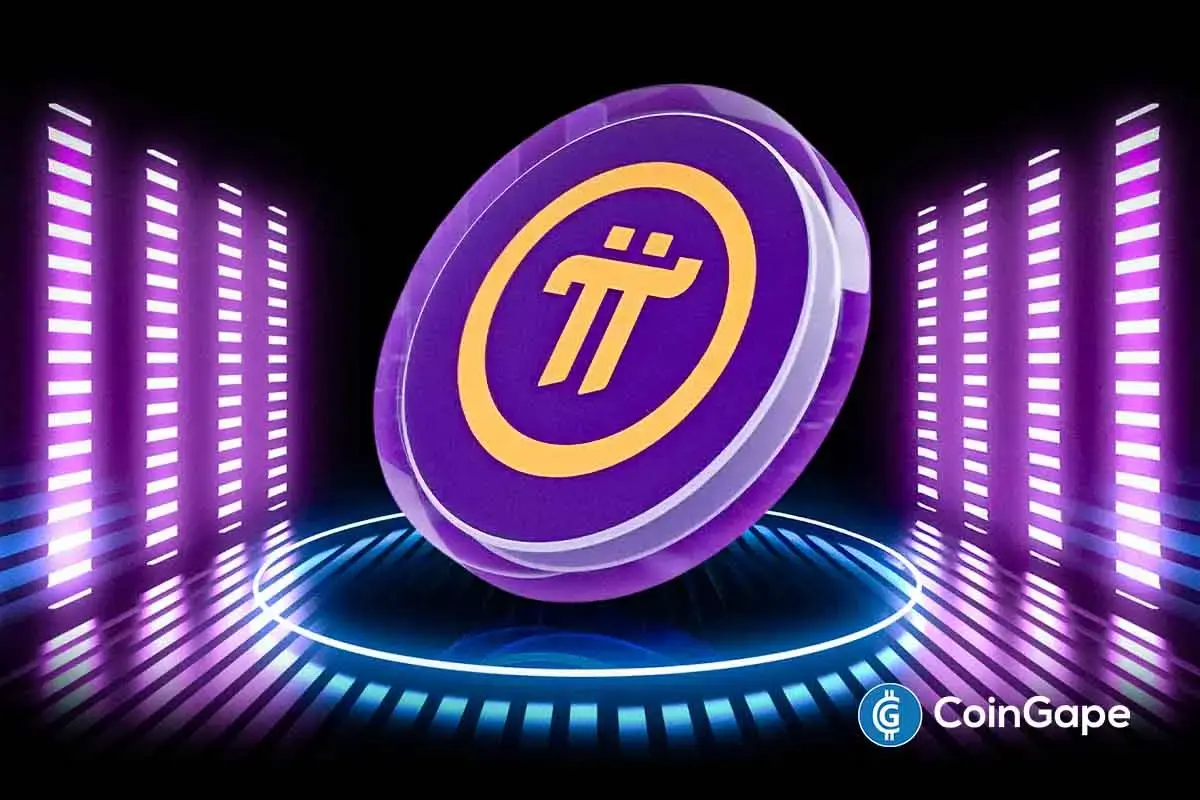Market
Why PEPE’s Swift Return to $0.000010 Could Be a Pipe Dream

The price of Pepe (PEPE), the Ethereum-based frog-themed meme coin, seems stable today. Like many other cryptos, PEPE has endured a long period of decline.
Currently, the token trades at $0.0000079, which is a 32% 30-day decrease. To erase these losses, the price has to return to $0.000010 at least. But can it?
Pepe Dormant Tokens Have Come Out of Their Shell
A 90-day increase in a meme coin’s Mean Coin Age (MCA) indicates that more previously dormant tokens are being moved back into circulation. MCA measures the average age of all tokens on a blockchain and provides insights into holder behavior.
Typically, when MCA decreases, it signals that investors are moving their assets out of long-term storage and into cold wallets, demonstrating faith in the coin’s long-term value.
However, an increase, like what’s happening with PEPE, suggests that long-held coins are being reintroduced into the market. This usually leads to heightened transaction activity and can be a precursor to sell-offs, as holders release tokens they previously held onto for a long time.
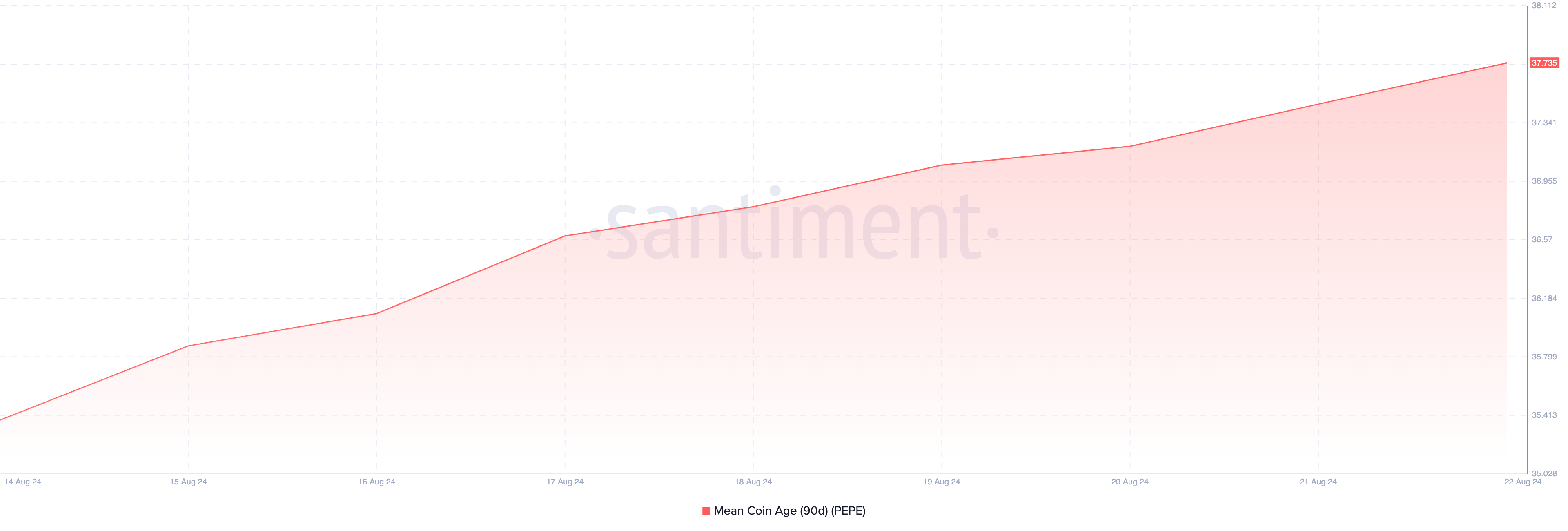
If the trend continues, the recent stability of the token could be at risk. On-chain data shows a decline in the number of addresses accumulating PEPE over the past 30 days, which is a concerning signal for short-term momentum.
Typically, a rise in short-term holders suggests increased demand, often leading to price growth as more traders accumulate positions. Conversely, a reduction in short-term holders usually points to weakening demand, which can result in either stagnant price action or a decline.
In PEPE’s case, if fewer short-term holders continue accumulating, this could either lead to prolonged sideways movement or further price drops, especially if dormant tokens continue to be unlocked and sold.
Read more: 5 Best Pepe (PEPE) Wallets for Beginners and Experienced Users
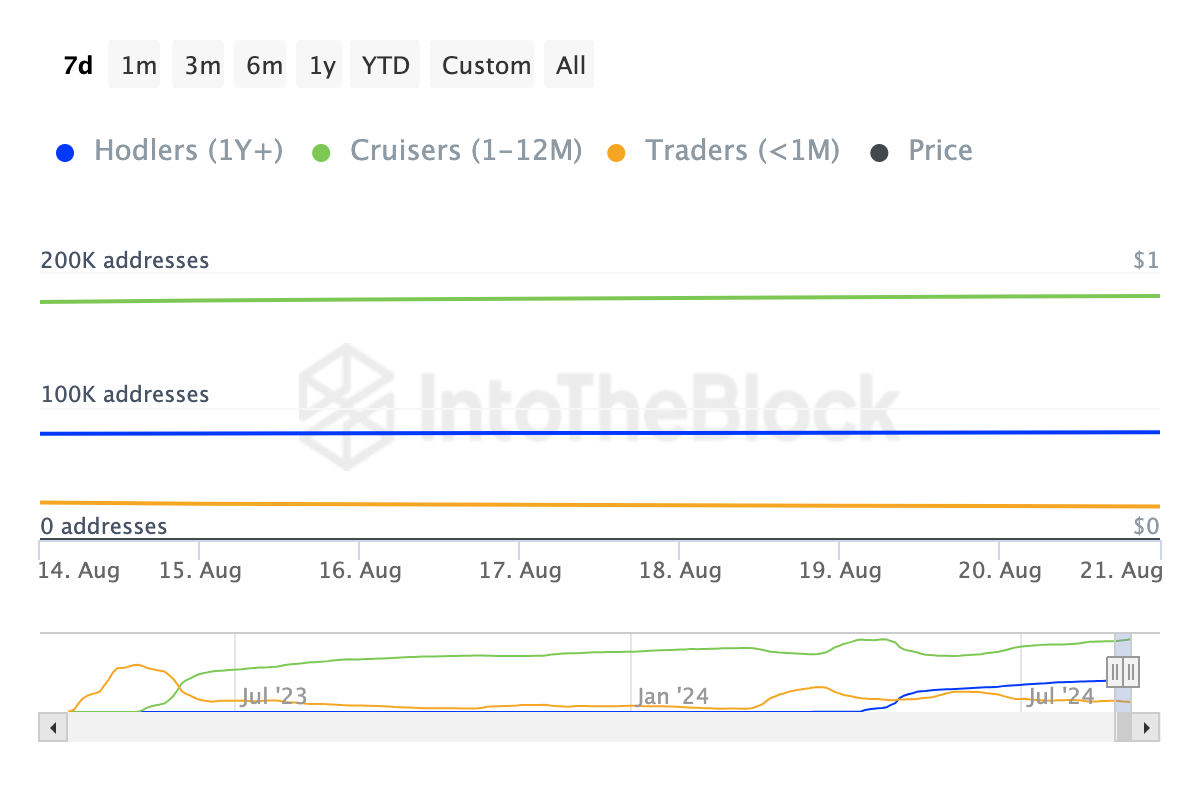
PEPE Price Prediction: The Bounce Could Be Hindered
From a technical standpoint, the lack of significant buying volume is one factor hindering a notable price jump for PEPE. On many occasions, the cryptocurrency experiences substantial respite when buyers accumulate in large volumes.
But over the past few weeks, and till the time of writing, this has not happened. Further, the Balance of Power (BoP) on the daily chart has turned downwards and is negative. The BoP is a price-based technical indicator that measures the strength of buyers and sellers in the market.
Positive values of the indicator suggest bullish dominance, while negative ones infer bearish control. As such, it appears that PEPE, despite its slight bounce, remains within reach of another rejection.
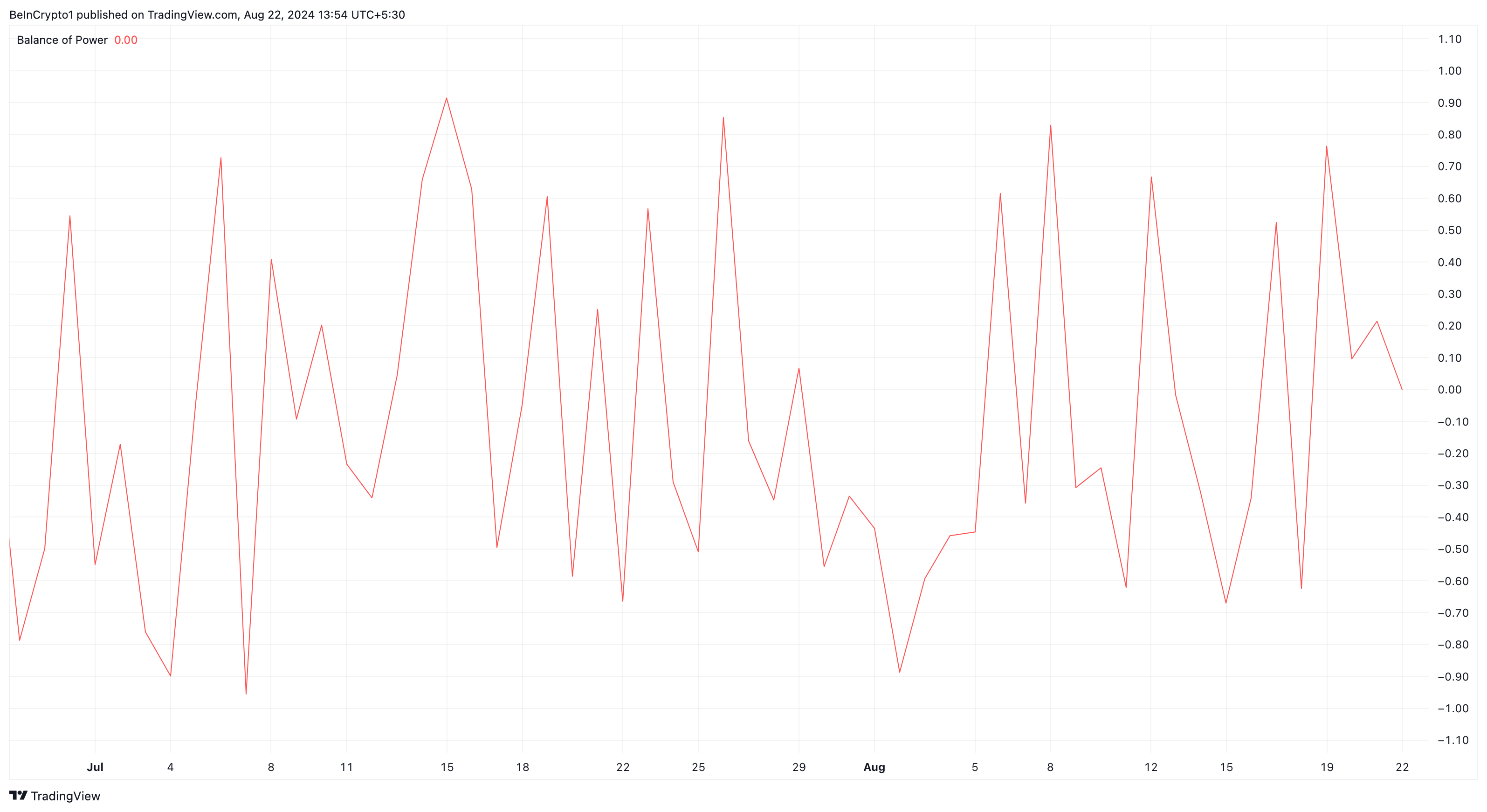
An assessment of the chart also reveals that the token trades below the demand zone between $0.0000085 and $0.0000088, suggesting that the recent upswing has yet to be validated. The token is also below the 20-day Exponential Moving Average (EMA).
The EMA measures trend direction, and the price being below the indicator is a bearish sign. Should this remain the same, PEPE’s price might retrace to $0.0000070 once more. However, a break above the indicator could invalidate this thesis. If this is the case, the price might increase.
Read more: Pepe (PEPE) Price Prediction 2024/2025/2030
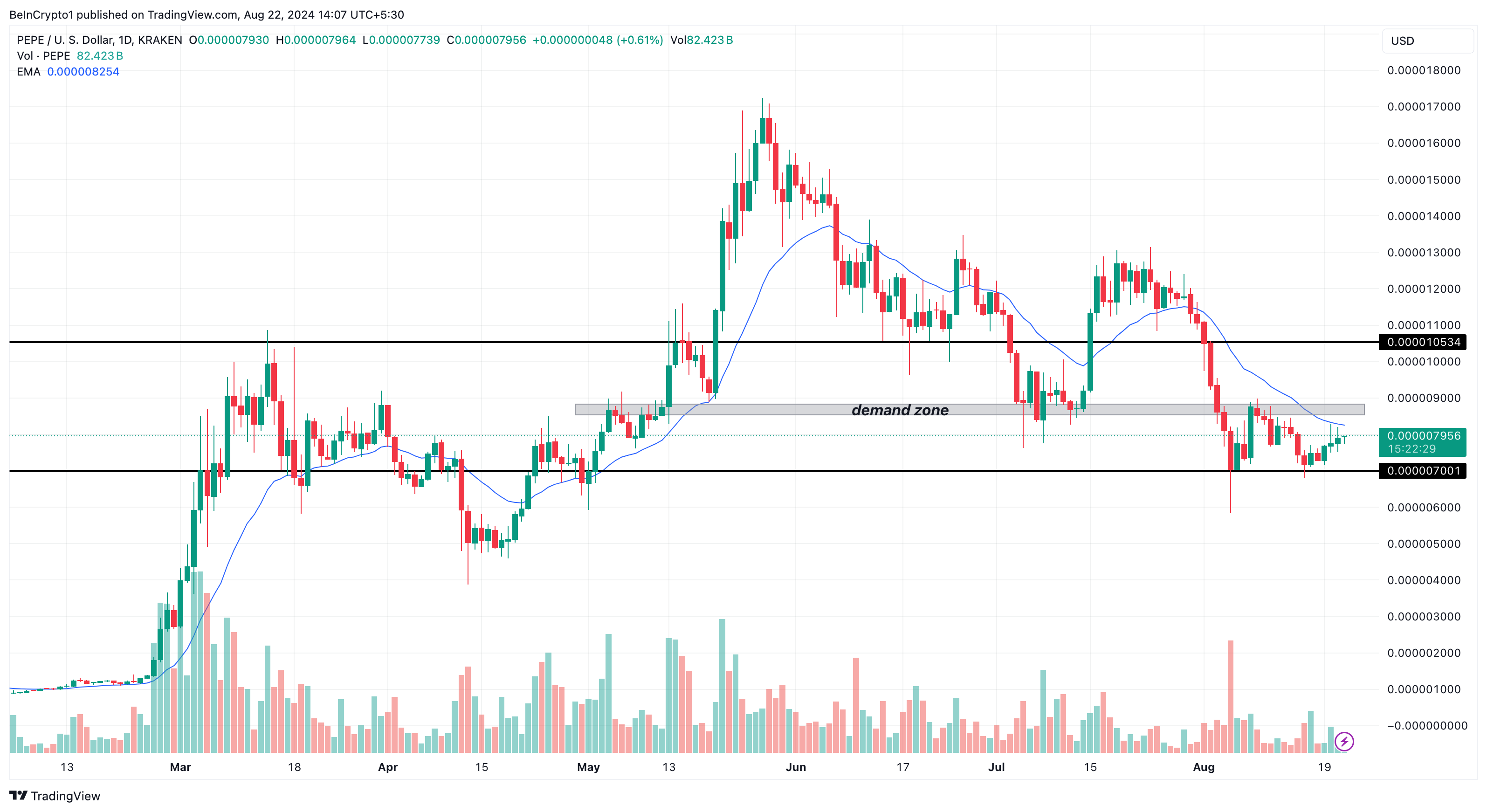
In addition, there is ongoing speculation that Coinbase might list the meme coin, fueled by the exchange’s creation of a dedicated page on its website. If this listing materializes, it could trigger a significant rally for PEPE, potentially pushing its price back to $0.000010 or higher.
Disclaimer
In line with the Trust Project guidelines, this price analysis article is for informational purposes only and should not be considered financial or investment advice. BeInCrypto is committed to accurate, unbiased reporting, but market conditions are subject to change without notice. Always conduct your own research and consult with a professional before making any financial decisions. Please note that our Terms and Conditions, Privacy Policy, and Disclaimers have been updated.
Market
Bitcoin Price Drops Below $80,000 Amid Heavy Weekend Selloff

Bitcoin fell below the $80,000 mark on Sunday as investor sentiment weakened across global markets. The move came alongside a spike in daily liquidations, which totaled $590 million.
Heightened anxiety over former President Donald Trump’s proposed tariffs and escalating geopolitical tensions weighed heavily on risk assets.
More Traders are Shorting Bitcoin After the Worst Q1 In a Decade
The long-short ratio for Bitcoin dropped to 0.89, with short positions now accounting for nearly 53% of activity. The shift reflects growing skepticism about Bitcoin’s short-term direction.
Traditional markets also suffered sharp losses. The Nasdaq 100, S&P 500, and Dow Jones all entered correction territory last week, posting their worst weekly performance since 2020.

Bitcoin closed the first quarter with a loss of 11.7%, making it the weakest Q1 since 2014.
The broader crypto market lost 2.45% on Sunday, reducing total market capitalization to $2.59 trillion. Bitcoin remains the dominant asset, holding 62% of the market share. Ethereum follows with 8%.
Sunday’s selloff triggered $252.79 million in crypto derivatives liquidations. Long positions made up the bulk of that figure at $207 million. Ethereum traders accounted for about $72 million in long liquidations alone.
Bitcoin’s price remains closely tied to shifts in global liquidity, often reflecting broader macro trends. With U.S. markets set to open Monday, this weekend’s activity signals continued volatility ahead.

Investors may face more pressure after Federal Reserve Chair Jerome Powell warned that Trump’s tariff plans could push inflation higher while slowing economic growth.
That combination raises the risk of stagflation, a situation where policy tools become less effective. Efforts to stimulate the economy can worsen inflation, while measures to control prices can limit growth.
Disclaimer
In adherence to the Trust Project guidelines, BeInCrypto is committed to unbiased, transparent reporting. This news article aims to provide accurate, timely information. However, readers are advised to verify facts independently and consult with a professional before making any decisions based on this content. Please note that our Terms and Conditions, Privacy Policy, and Disclaimers have been updated.
Market
Avalanche Price Holds Under $20, Low Selling Can’t Lift Price

Avalanche (AVAX) price has been unable to reclaim the $20.00 support level after falling through it in the recent correction. The altcoin is now trading well below that key mark despite a noticeable decline in selling pressure.
However, bullish momentum has not been strong enough to counter prevailing bearish cues.
Avalanche Investors Are Not Selling
Analyzing the active address profitability reveals that less than 3% of current participants are in profit. This data highlights a crucial detail: most AVAX holders are unwilling to sell at a loss. Instead, they appear to be HODLing in anticipation of a recovery. This lack of selling is a bullish indicator.
The patience shown by investors during this downturn could help Avalanche establish a stronger base once broader market conditions stabilize. As fewer holders are actively selling, downward pressure on AVAX’s price is reduced. Given the right market catalysts, this opens a window for the altcoin to bounce back.

Despite low selling activity, the technical indicators continue to signal weakness. The Relative Strength Index (RSI) has dropped back into the bearish zone after a brief recovery attempt. This suggests a lack of buying pressure and continued uncertainty among investors.
Market support has been lacking for AVAX in recent sessions, preventing a meaningful rebound. The altcoin is facing consistent resistance and has failed to generate strong upward momentum.
The RSI trend reinforces that the macro environment is still leaning bearish, keeping Avalanche subdued.
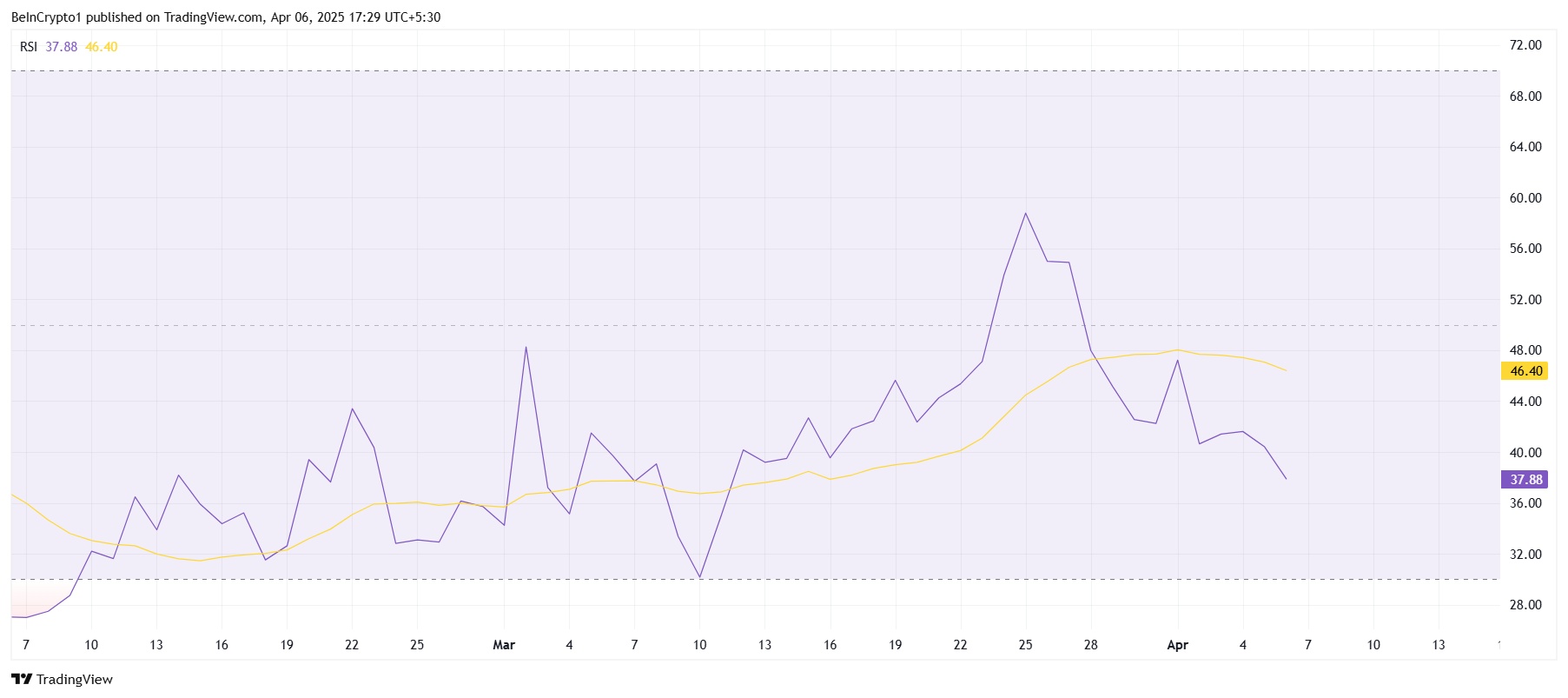
AVAX Price Is Vulnerable
Avalanche is currently priced at $17.19, marking a 25% decline over the past two weeks. The sharp drop came after AVAX failed to break through the $22.87 resistance level. This rejection led to the current consolidation below $20.00, with bulls unable to reverse the trend.
Given the existing market cues, Avalanche may struggle to reclaim $18.27 as a support level. If the altcoin fails to secure this level, it risks dropping further to $16.25. This would deepen investor losses and delay any chances of recovery.
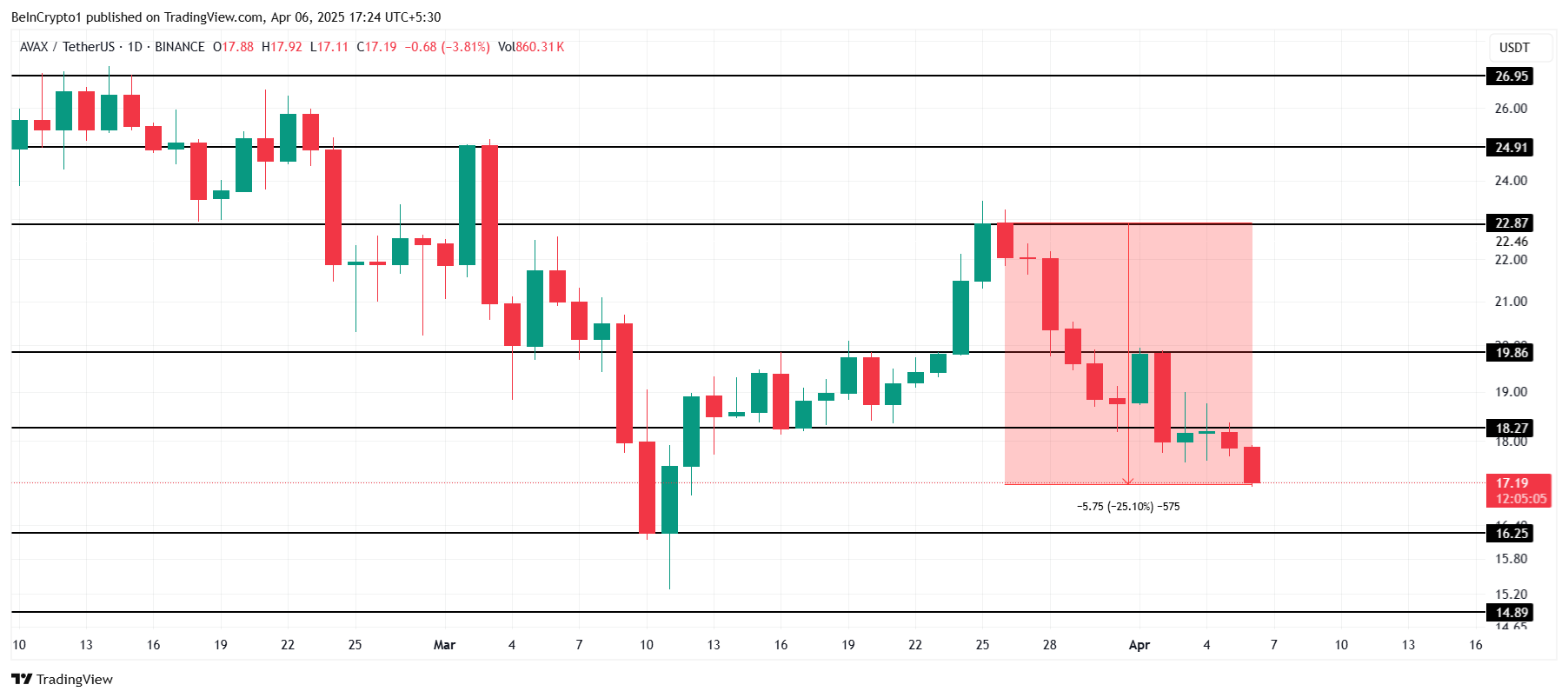
On the upside, a key shift would occur if AVAX can flip $19.86 into support. This would suggest strengthening bullish sentiment and open the door for a rally toward $22.87. Reclaiming this level could allow Avalanche to recover some recent losses and restore investor confidence.
Disclaimer
In line with the Trust Project guidelines, this price analysis article is for informational purposes only and should not be considered financial or investment advice. BeInCrypto is committed to accurate, unbiased reporting, but market conditions are subject to change without notice. Always conduct your own research and consult with a professional before making any financial decisions. Please note that our Terms and Conditions, Privacy Policy, and Disclaimers have been updated.
Market
Justin Sun Claims First Digital Trust Fraud Exceeds Impact of FTX


TRON founder Justin Sun is intensifying his accusations against First Digital Trust (FDT), the issuer of the FDUSD stablecoin, who he claims embezzled $500 million of its clients’ funds.
In an April 5 post on X, Sun compared FDT to the now-defunct FTX exchange, claiming the FDT case is “ten times worse.” FTX filed for bankruptcy in November 2022 after a bank run revealed an $8 billion shortfall in its assets.
Justin Sun Compares First Digital Trust to FTX
Sun argued that while FTX misused user funds, the exchange at least maintained an internal system that portrayed the activity as pledged loans.
He explained that FTX used assets like FTT, SRM, and MAPS tokens as collateral in transactions that, on the surface, had some structure. In contrast, Sun claims First Digital Trust outright stole funds without user consent or any internal pledge mechanism.
“FDT simply siphoned off $456m from TUSD’s custodial funds without client authorization or knowledge, and booked as loans to a dubious third party Dubai company without any collaterals,” Sun claimed.
The Tron founder further asserted that the now-convicted FTX founder Sam Bankman-Fried (SBF) indeed misused funds. However, Sun noted much of that capital went into investments in reputable firms such as Robinhood and AI company Anthropic.
On the other hand, Sun alleged that FDT diverted user assets into private entities for personal gain without any meaningful investment.
Sun also took aim at FDT CEO Vincent Chok Zhuo, criticizing his apparent indifference following the exposure of the alleged misconduct.
According to him, Chok has shown no intention of taking responsibility. This contrasts with SBF, who took steps to recover user assets and cooperated with authorities.
“Vincent Chok has acted deceptively and maliciously, pretending nothing happened when exposed,” Sun stated.
Considering this development, the TRON founder urged Hong Kong authorities to take swift action. He called for a response similar to that of US regulators during the FTX collapse.
Sun emphasized that Hong Kong’s reputation as a global financial hub is at risk and called for immediate enforcement to prevent further damage.
“Hong Kong must act like its US counterparts—swiftly, decisively, and effectively. We cannot allow the fraudsters continue its pyramid scheme against the public,” the crypto entrepreneur concluded.
To support investigations, Sun has launched a $50 million bounty program aimed at exposing the alleged misconduct. He also met with Hong Kong lawmaker Johnny Wu to discuss potential regulatory action.
Disclaimer
In adherence to the Trust Project guidelines, BeInCrypto is committed to unbiased, transparent reporting. This news article aims to provide accurate, timely information. However, readers are advised to verify facts independently and consult with a professional before making any decisions based on this content. Please note that our Terms and Conditions, Privacy Policy, and Disclaimers have been updated.
-

 Bitcoin24 hours ago
Bitcoin24 hours agoBitcoin (BTC) To Take Off In June, Analyst Pins Market Target At $175,000
-

 Altcoin19 hours ago
Altcoin19 hours agoBitcoin Holds $83K Despite Macro Heat, What’s Happening?
-

 Ethereum16 hours ago
Ethereum16 hours agoEthereum Whale Activity Fades Since Late February – Details
-

 Market15 hours ago
Market15 hours agoXRP High Stakes Setup: Analyst Warns Of Sharp Move To $17 Or $0.65
-
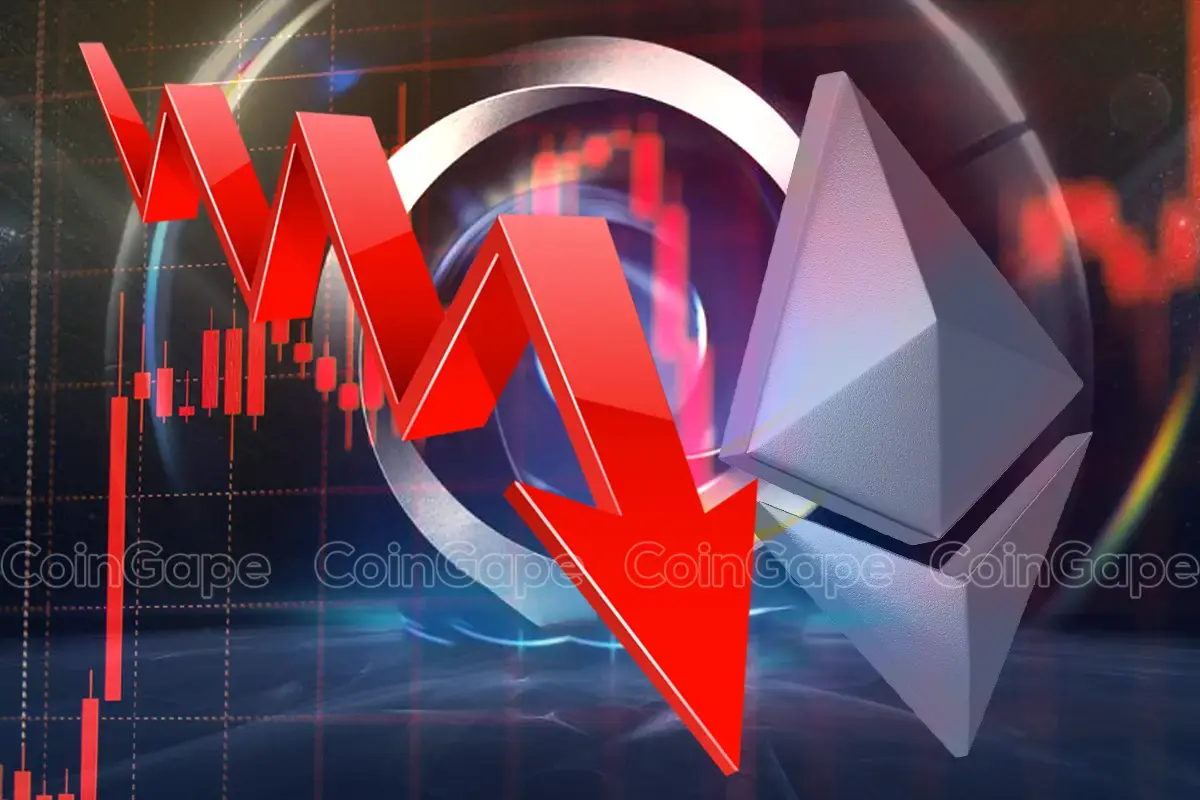
 Altcoin23 hours ago
Altcoin23 hours agoEthereum Price Threatens Decline To $1600 After Breakdown From Symmetrical Triangle
-

 Ethereum18 hours ago
Ethereum18 hours agoIs Ethereum Price Nearing A Bottom? This Bullish Divergence Suggests So
-

 Altcoin17 hours ago
Altcoin17 hours agoHas The Dogecoin Price Bottomed Out? Analyst Points Out ‘Critical Decision Zone’
-

 Bitcoin16 hours ago
Bitcoin16 hours agoBitcoin Traders’ Realized Losses Reach FTX Crash Levels — What’s Happening?




